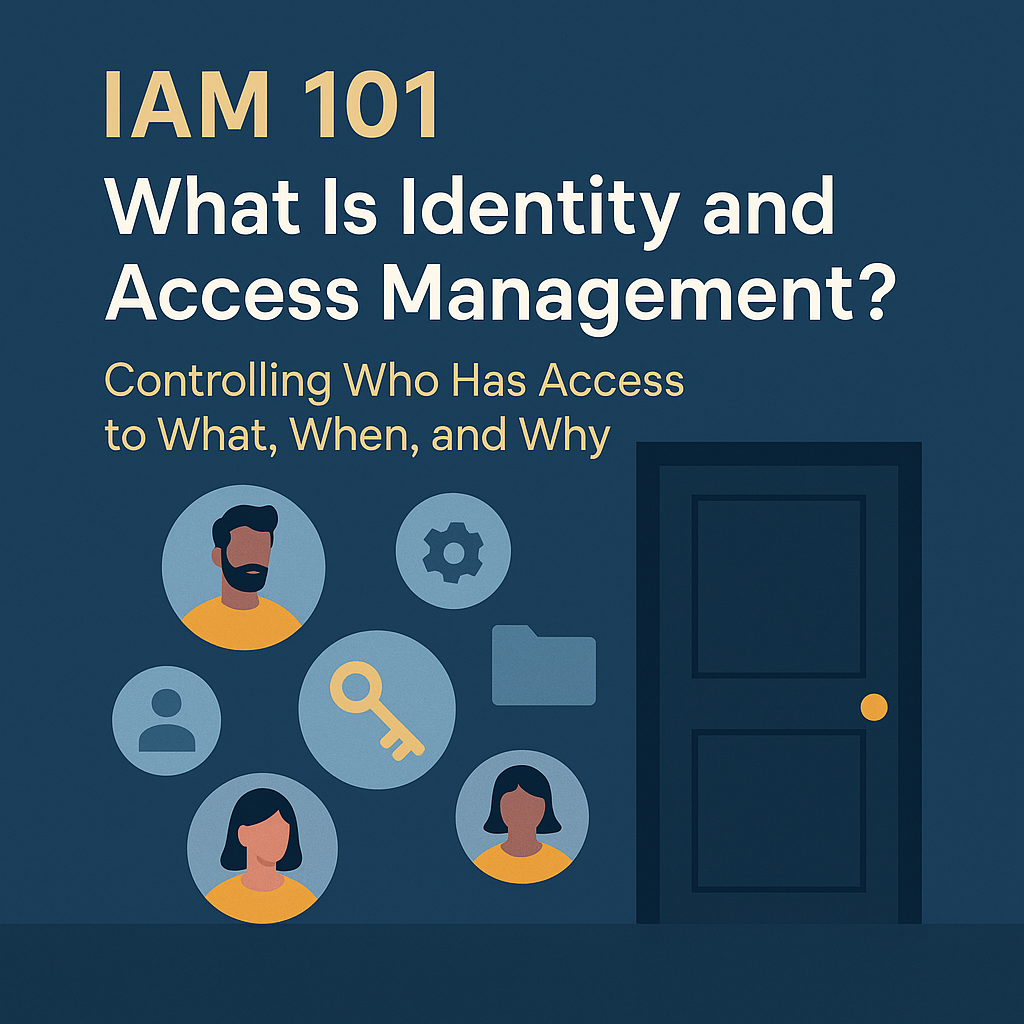
TL;DR
Identity and Access Management (IAM) is the framework that ensures secure, efficient control over who (users, devices, or systems) can access what resources within an organization. For IT professionals, IAM is foundational to cybersecurity, compliance, and operational scalability. Core components include authentication, authorization, user lifecycle management, and auditing. Challenges like shadow IT and hybrid environments persist, but solutions like Zero Trust and AI-driven automation are rising. Bonus: Use GPT prompts for SEO to streamline policy documentation and access reviews.
Background: The Rise of Identity-Centric Security
Identity and Access Management (IAM) emerged as a response to the growing complexity of digital ecosystems. In the 1990s, basic username/password systems sufficed. But with cloud adoption, remote work, and APIs, organizations needed a way to manage identities and enforce least privilege at scale.
IAM answers two critical questions:
- Who/What is requesting access? (Authentication)
- What are they allowed to do? (Authorization)
For IT teams, IAM isn’t just about security—it’s about enabling productivity. A well-designed IAM system reduces friction (e.g., via Single Sign-On) while minimizing risks like lateral movement in breaches. According to the Verizon 2023 Data Breach Investigations Report, 74% of all breaches involve human error or stolen credentials, underscoring IAM’s role as a first line of defense.
Why IAM Matters for IT Teams
1. Mitigate Insider Threats
Overprivileged accounts (e.g., ex-employees with lingering access) are a top attack vector. IAM automates deprovisioning and enforces least privilege.
2. Simplify Compliance
Regulations like GDPR, HIPAA, and SOX require auditable access controls. IAM centralizes logging and policy enforcement.
3. Support Hybrid Environments
With resources split between on-prem, cloud, and third-party SaaS (e.g., AWS, Salesforce), IAM provides unified governance.
4. Enable DevOps & CI/CD Pipelines
Machine identities (API keys, service accounts) now outnumber human users. IAM secures secrets and automates credential rotation.
Core Components of IAM
1. Authentication
Verifies identity through:
- Multi-Factor Authentication (MFA): Combines passwords with tokens, biometrics, or device trust.
- Federated Identity: Protocols like SAML, OAuth 2.0, and OpenID Connect enable cross-domain SSO.
2. Authorization
Defines permissions using:
- Role-Based Access Control (RBAC): Assigns access based on job roles (e.g., “Network Admin”).
- Attribute-Based Access Control (ABAC): Grants access dynamically using context (time, location, risk score).
3. User Lifecycle Management
Automates provisioning/deprovisioning across systems via SCIM or LDAP.
4. Auditing & Reporting
Generates logs for compliance audits (e.g., who accessed sensitive data at 2 AM?).
IAM Challenges for IT Professionals
1. Shadow IT & Unmanaged Identities
Employees spinning up unauthorized cloud instances or SaaS tools create blind spots.
Fix: Deploy Cloud Access Security Brokers (CASBs) to monitor unsanctioned apps.
2. Legacy System Integration
Mainframe or on-prem systems often lack modern API support.
Fix: Use identity bridges or hybrid IAM solutions like Azure AD Connect.
3. Scalability in Large Enterprises
Managing millions of identities (human and machine) strains legacy IAM tools.
Fix: Adopt cloud-native IAM platforms with auto-scaling, like Okta or Ping Identity.
4. Balancing Security & Usability
Overly strict policies lead to workarounds (e.g., sharing credentials).
Fix: Implement adaptive authentication that steps up security only for risky scenarios.
IAM Best Practices for IT Teams
Enforce Least Privilege Everywhere
Use RBAC/ABAC to limit access to the minimum required. Audit permissions quarterly.Automate Machine Identity Management
Rotate API keys and certificates automatically using tools like HashiCorp Vault.Adopt Zero Trust Principles
Treat every access request as untrusted. Verify identity, device health, and context before granting access.Leverage GPT Prompts for Policy Efficiency
Use GPT prompts for SEO (even in IT contexts) to:- “Generate a compliance checklist for GDPR access audits.”
- “Draft an incident response plan for a compromised service account.”
Future Trends in IAM
1. AI-Driven Threat Detection
Machine learning analyzes access patterns to flag anomalies (e.g., a user suddenly exporting terabytes of data).
2. Passwordless Authentication
FIDO2 standards and biometrics (e.g., Windows Hello) are phasing out passwords.
3. Decentralized Identity
Blockchain-based systems let users control their own credentials (e.g., Microsoft Entra Verified ID).
4. Identity-First Security
IAM becomes the perimeter, replacing traditional network-based security models.
Final Thoughts
For IT teams, IAM is no longer optional—it’s the cornerstone of modern security and operational agility. Start by auditing your current identity landscape, prioritize MFA and least privilege, and explore AI/automation tools to reduce overhead. And don’t sleep on GPT prompts for SEO; they’re surprisingly handy for drafting policies or simplifying compliance docs.